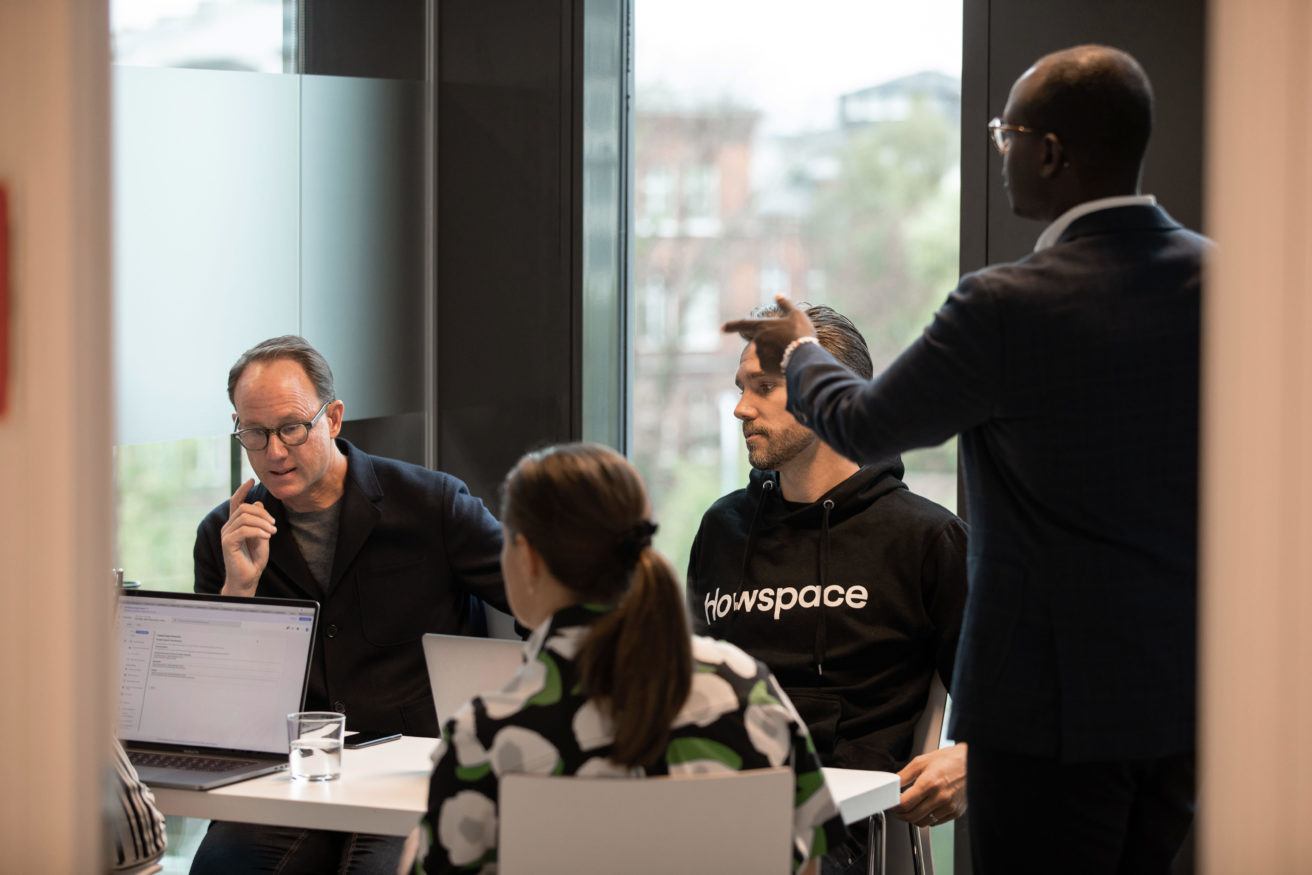
How to create a noiseless environment for your next change initiative
Today’s work environments are noisy. There’s always another email or Slack message to respond to. Another meeting to attend. Even after closing your laptop, you can easily get lost in an endless stream of alerts and notifications on your phone. Every time you shift your attention between different messages, apps, devices, and tasks—context switching—your cognitive load takes a toll, making you less productive and more exhausted.
How much could we improve our productivity and wellbeing at work if we reduced the amount of noise around us? How could we nix distractions and create greater impact by collaborating in one shared, noiseless space?
We developed Howspace in response to these workplace challenges. The noiseless design principle is closely related to simplicity—the first Howspace design principle. It’s all about cutting out the noise around us to focus on the most important things.
In this post, we’ll outline how you can apply the noiseless principle in your next collaborative change or learning initiative.
What noiseless means in practice
No visual clutter
Howspace is designed so that you don’t see anything that’s not necessary in the moment. We do all we can to avoid visual clutter in the Howspace platform to help facilitators and participants focus on the important things. For example, certain widgets that aren’t often needed—like annotation and pinning—aren’t shown with the other default widgets. Replies in chats are also hidden as a default.
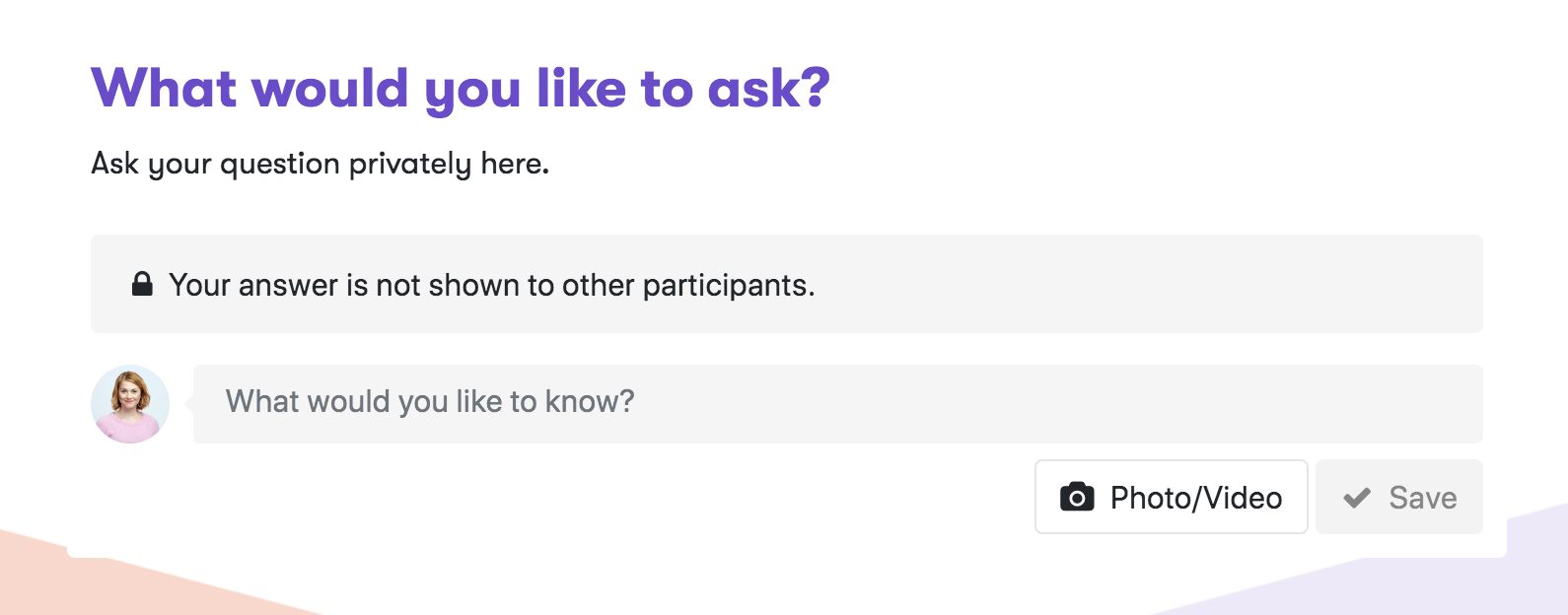
While administrators can edit page layouts, add content, change workspace settings, and add users, participants only see what’s relevant for them—everything else is hidden.
Here’s how one of our customers described the participant experience in Howspace: “It’s easy to participate—you don’t have to think twice. People were commenting that they don’t even think about multitasking.”
One-click approach
When you invite someone to a workspace, you give them a direct path to relevant content. Participants don’t need to fumble through different pages to get where they need to be. Instead, you send participants an invitation directly to their email with a link that goes straight to the current phase of the process so that they’re immediately in the right place.
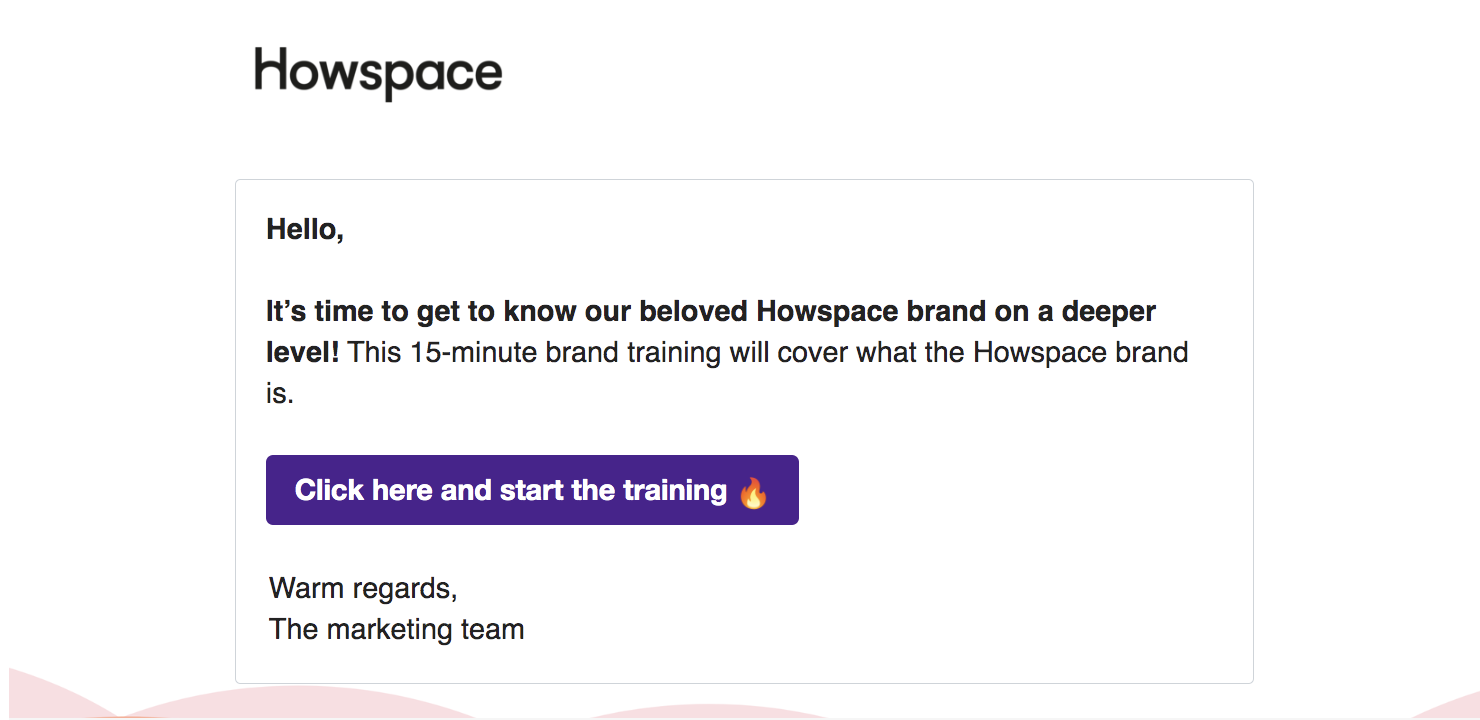
7 concrete tips to reduce noise when collaborating online
As a facilitator, it’s your job to make the participant experience as easy and noiseless as possible. Here are some practical tips to help you do just that.
1. Cut your program into smaller pieces
In addition to the visual perspective, you can also think of the noiseless principle from the process management perspective. To reduce the amount of things you ask participants to do at once, try breaking up your change or learning program into smaller pieces.
If you’re running a training program, for example, plan several short modules with just one or two learning objectives per module to keep a clear focus. Give participants small tasks they can do in just a couple of minutes so that they can make learning a part of their daily schedule.
2. Use one workspace per project
The way you set up your workspace can reduce the amount of noise for participants. Don’t cram several different projects into the same space or spread your project over multiple workspaces. Instead, use one workspace for the project or process you’re facilitating. That way, participants will have everything they need in the same space, and everything outside of that is irrelevant.
3. Increase participation through invitations and instructions
You can get participants motivated and engaged in your project by sending meaningful invitations and instructions. Write or record short and informative invitations explaining to participants why they’re invited and what they need to do. When participants know their role in creating impact, they’ll be better able to filter out the noise and focus on the task at hand.
When sending invitations, be sure to invite only the people who really need to be there. You don’t want any people just hanging around who aren’t so interested in the topic, as they won’t be engaged, and that apathy can spread to the other participants. It’s better to have fewer engaged participants than more people who don’t really know what they’re doing there.
4. Hide and show information when relevant
As a facilitator, you can control what’s shown in a workspace at different times. Hide anything and everything that’s not relevant at a given moment—including pages, containers, and widgets—and schedule when you’d like them to appear. This allows participants to focus on just one thing at a time.
Even if you have a huge workspace, you can hide all pages besides a single widget to keep everyone focused. Let’s say you want to run a poll during a workshop—you can hide all sections of your page besides the poll, and once that’s done, only show the next focus area and hide the poll.
5. Filter and sort information in the most relevant way
You can decide how information is shown to participants. For example, let’s say you need to come up with marketing priorities for the next quarter. You can invite participants in a meeting to share their ideas in a chat, then ask everyone to score the ideas. After that’s done, you can bring the ideas with the most points to the top, where they’re the most visible.
6. Visualize information
When there’s more information than you have time to read, you can use visualization and sorting tools to make sense of discussions. AI word clouds, summaries, sentiment analyses, and theme clustering, for example, allow you to quickly zoom in on important points and divide dialogue into meaningful categories.
Let’s say you’re running a workshop with 200 people and you want to quickly review their answers to your question. Rather than scrolling through all the comments in the chat, you can instantly pull up a word cloud or the theme clusters to see the key points at a glance without getting lost in the noise.
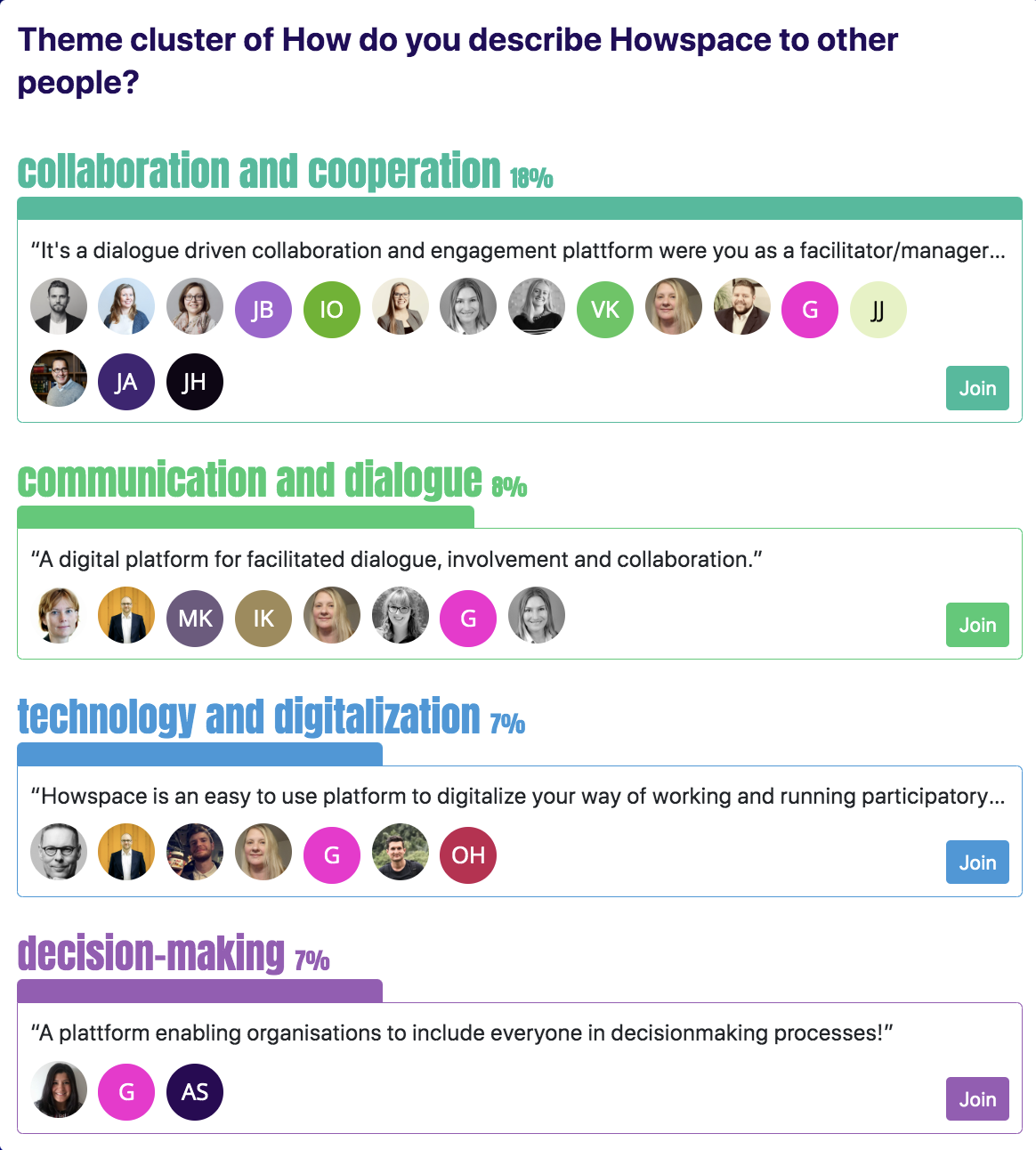
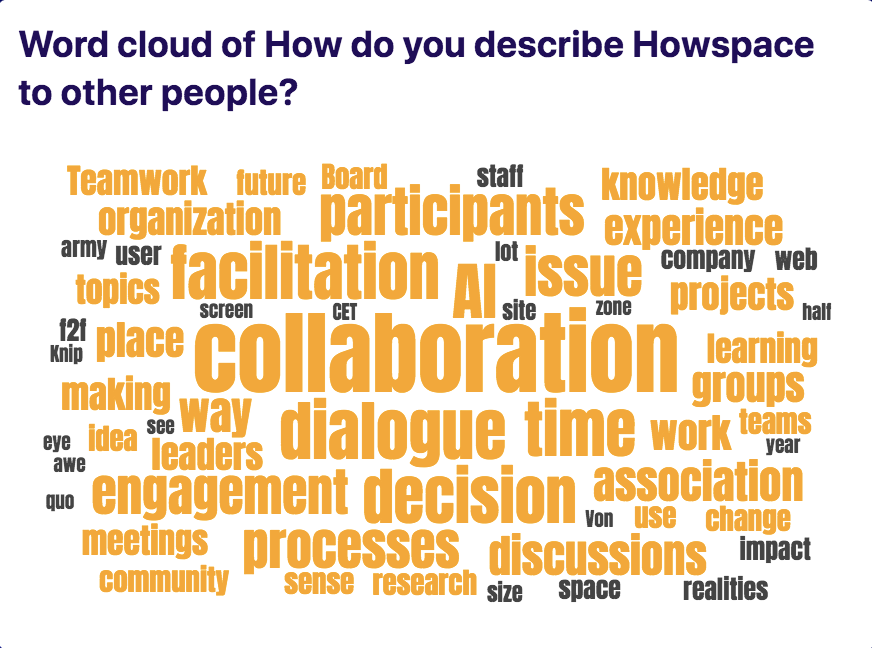
7. Fight information overload with interaction
The main problem with information in the workplace isn’t the lack of information. Rather, we tend to have too much information on our hands, from emails and instant messages to shared drives.
The problem with all that static information is that it’s hard for people to make sense of it. It just becomes noise. By bringing people together to talk and reflect on certain topics, they’re better able to make meaning out of the information shared.
Noiseless in a nutshell
Think back to all those alerts, notifications, and messages that bombard us every day. Pings from your colleagues. A missed call from your boss. Countless open browser tabs.
Now, imagine shutting everything off—going into ‘do not disturb’ mode—stepping into the forest, and exhaling. Finally, no more noise and mental chatter. That’s the feeling we want participants to have when arriving at a Howspace workspace dedicated to one single process—to be fully immersed in the present experience.
Deep-dive into each design principle
Noiseless is the second Howspace Design Principle. Check out other design principles blog posts in the series to learn about what’s at the core of our platform:
- Howspace design principles: The fundamental ideas behind the platform
- Principle 1: How to simplify your processes so that people will actually participate
- Principle 3: How to build the context for your collaborative projects to achieve better results
- Principle 4: How to create impact by taking a workflow-based approach to collaboration
- Principle 5: How to design collaboration & guide participants along a shared journey